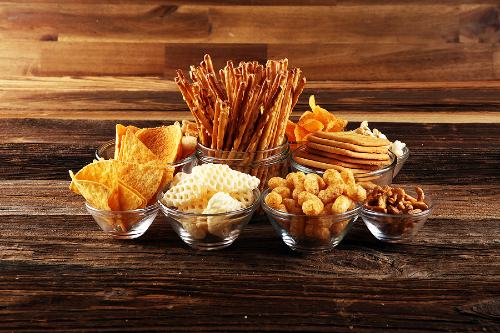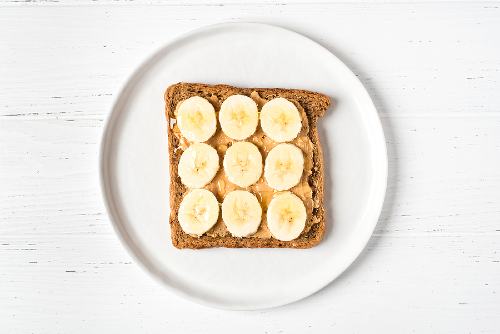With so many snack options out there, it can be a challenge to choose one that is both healthful and satisfying. Read on to learn about how you can get the most out of your snacking experience!
Check in with your hunger.
This is an important place to start when it comes to mindful snacking. Before walking to the refrigerator or the pantry, ask yourself a few simple questions:
- Do I feel hungry?
- Do I feel the need to eat out of boredom?
- Do I want something to eat, or do I just need to switch to a new activity?
If you find that you are not actually hungry, your mind may need to be engaged in a different way. Take some time to go for a walk (check out our blog on mindful walking) or send a quick text to a friend you haven’t heard from in a while.
If you are hungry, grab a snack!

If you are hungry…
Snacking throughout the day has many benefits! Snacks can be a great way to maintain energy levels and regulate blood sugar in between meals. [1] Snack foods can also be good sources of fiber and can be the perfect way to add servings of fruits and vegetables to your daily intake.
Above all, taking a moment to check in with your body and recognize that you may need a little energy in between meals is a healthy practice. And who knows… If you are really hungry, you may need a meal instead!
To stay prepared for snacking, here are some items to keep around:
- Whole wheat crackers
- Rice cakes
- Tortilla chips
- Popcorn (Choose options with less added sugar and sodium or pop your own kernels!)
- Protein sources from dairy like yogurt, hard cheese, and cottage cheese
- Fruits and veggies (dried, fresh, frozen, and canned)
- Nut butters such as peanut butter or almond butter
- Dips (salsa, hummus, etc.)

Building a snack 101.
At this point, you have checked in with your hunger, you know that you need a snack, and you have some items in your pantry. Now it’s time to decide what you are in the mood for and build your snack! Here are some of our favorite satisfying snacking combinations:
- Banana slices and peanut butter on whole-grain toast
- Low-fat yogurt with fresh or frozen berries
- Apple slices with peanut butter to dip
- Cottage cheese with fresh or canned peach slices
- A handful of pretzels and hummus to dip
- Whole wheat crackers and string cheese
- Whole grain tortilla chips and salsa

Some additional smart snacking tips:
- Pay attention to serving sizes on nutrition facts labels. For more information on where to find serving sizes and how to navigate nutrition facts labels, visit this blog.
- Pairing carbohydrate sources with protein sources helps in maintaining blood sugar and staying fuller for longer. [1]
- For fruits and veggies, all forms count including fresh, frozen, canned, and dried! Whatever you have on hand can count towards your daily intake. Note: Recommended serving amounts differ for each person. Check out MyPlate.gov to find out how many fruits and veggies you should be eating each day.
- Try planning and pre-portioning your snacks for the week. This will not only help you stick to proper portion sizes, but it will also give you easy access to healthful foods that have been prepared ahead of time.
- Keep your preferences in mind when shopping for snack options. For example, if you know you don’t like carrot sticks, these are probably not the best item for you to pick up. Instead, try purchasing celery to cut into sticks!
Happy snacking!
Written by Darci Bell, RDN, LD | Edited by Leslie Davis, RDN, LD, CDCES, and the Nutrition Education Team
Posted on: May 10, 2021
References: